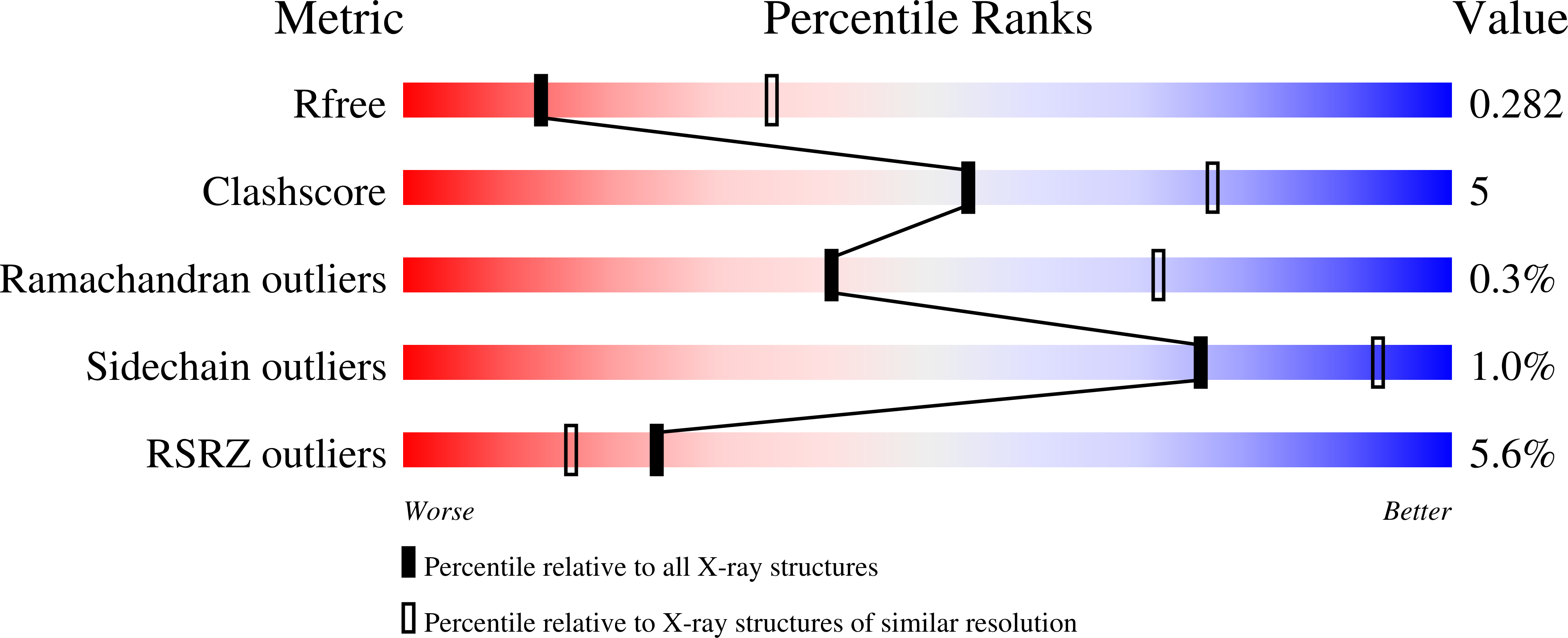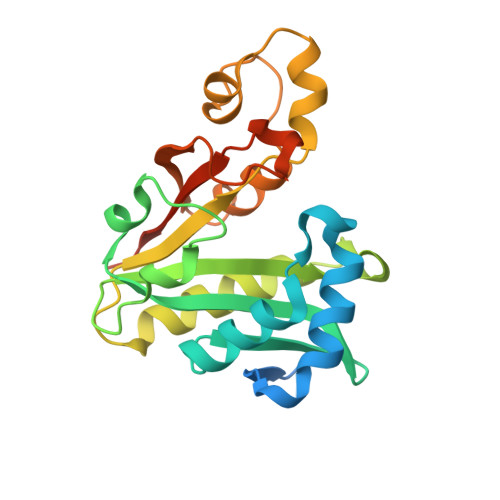Repurposing the GNAT Fold in the Initiation of Polyketide Biosynthesis.
Skiba, M.A., Tran, C.L., Dan, Q., Sikkema, A.P., Klaver, Z., Gerwick, W.H., Sherman, D.H., Smith, J.L.(2020) Structure 28: 63-74.e4
- PubMed: 31785925
- DOI: https://doi.org/10.1016/j.str.2019.11.004
- Primary Citation of Related Structures:
6MFC, 6MFD - PubMed Abstract:
Natural product biosynthetic pathways are replete with enzymes repurposed for new catalytic functions. In some modular polyketide synthase (PKS)?pathways, a GCN5-related N-acetyltransferase (GNAT)-like enzyme with an additional decarboxylation function initiates biosynthesis. Here, we probe two PKS GNAT-like domains for the dual activities of S-acyl transfer from coenzyme A (CoA) to an acyl carrier protein (ACP) and decarboxylation. The GphF and CurA GNAT-like domains selectively decarboxylate substrates that yield the anticipated pathway starter units. The GphF enzyme lacks detectable acyl transfer activity, and a crystal structure with an isobutyryl-CoA product analog reveals a partially occluded acyltransfer acceptor site. Further analysis indicates that the CurA GNAT-like domain also catalyzes only decarboxylation, and the initial acyl transfer is catalyzed by an unidentified enzyme. Thus, PKS GNAT-like domains are re-classified as GNAT-like decarboxylases. Two other decarboxylases, malonyl-CoA decarboxylase and EryM, reside on distant nodes of the superfamily, illustrating the adaptability of the GNAT fold.
Organizational Affiliation:
Life Sciences Institute, University of Michigan, Ann Arbor, MI 48109, USA; Department of Biological Chemistry, University of Michigan, Ann Arbor, MI 48109, USA.



















